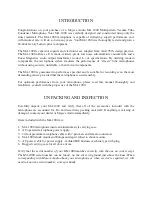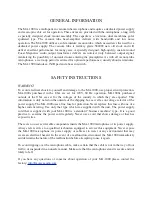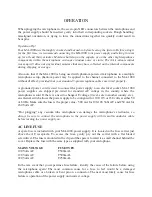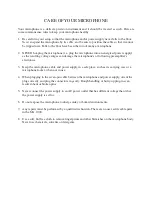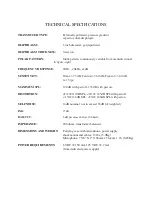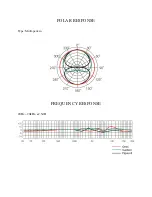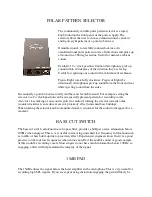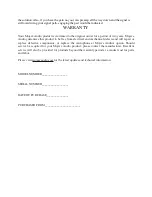
POLAR PATTERN SELECTOR
The continuously variable polar pattern selector is a rotary
knob found on the front panel of the power supply. The
selector allows the user to choose omnidirectional, cardioid
and figure eight patterns or a point in between.
Omnidirectional: rotate fully counterclockwise. An
omnidirectional polar pattern covers all directions and picks up
all sound in a 360 degree radius. Useful for natural, ambient
sound.
Cardioid: 12 o’clock position. Cardioid microphones pick up
sound within 120 degrees of the direction they are facing.
Useful for capturing one sound with a minimum of ambiance.
Figure Eight: rotate fully clockwise. Figure of Eight (bi-
directional) microphones pick up sound from the front and rear
while rejecting sound from the sides.
Occasionally a point in between will yield the most favorable result. For example, setting the
selector to a 2 o’clock position can be an especially pleasant pattern for recording vocals.
Also, for close miking of an acoustic guitar in cardioid, rotating the selector towards omni
(counterclockwise) can reduce excessive proximity effect (unwanted bass buildup).
When rotating the selector knob to omnidirectional, it is normal for the sound to disappear for a
moment.
BASS CUT SWITCH
The bass cut switch, also known as a hi-pass filter, provides a 6dB per octave attenuation below
100Hz when engaged. This is very useful in removing unwanted low frequency information such
as rumble or bass build-up due to proximity effect. Experienced engineers know that it is a good
practice to filter out low frequencies when it does not affect the audible sound. A good example
of this would be recording vocals. Most singers do not have much information below 100Hz, so
engaging a filter will help maintain the integrity of the signal.
15dB PAD
The 15dB reduces the signal before the head amplifier in the microphone. This is very useful for
recording high SPL signals. If you are experiencing distortion, engaging the pad will likely be


